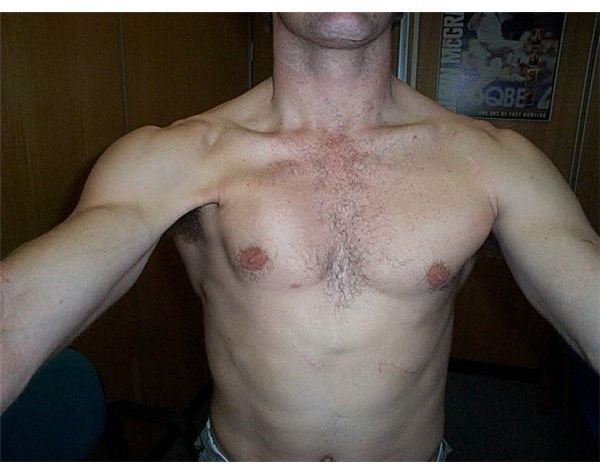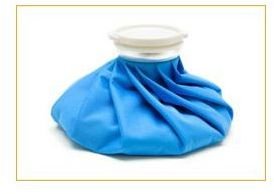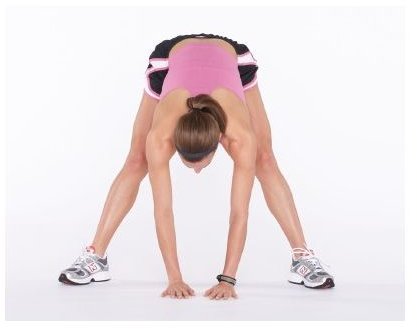Chest Muscle Pain: How to Tell an Injury from Normal Soreness
Chest Muscle Pain
Common causes of chest muscle pain would be natural to athletes such as football players but can commonly be seen by simple exercising. Bench press, dumbbell flys, dumbbell presses, and pushups are just some of the often used routines that would cause chest muscle pain. In most cases chest muscle pain is just something that comes along with lifting weights, but it is best to be able to tell if it is just normal pain, or perhaps a strained muscle.

Symptoms of Chest Muscle Strain and Tears
Anyone who works out on a daily basis or that comes from an athletic background should immediately be able to tell the difference between work out pains, and a strained or torn muscle. You may have more then just muscle fatigue and natural weight lifting pains if:
- There is any swelling, bruising, or redness, or open cuts as a consequence of sustained injury.
- Pain when resting.
- Pain whenever the certain muscle or joint in relation to that muscle is used.
- Weakness of the muscle or tendons (A sprain, in contrast, is an injury to a joint and its ligaments.)
- Inability to use the muscle at all.
You should seek consultation from a doctor if: you have a significant injury that home care methods bring no significant relief to within 24 hours. Also, if ever you hear a popping sound during time of injury, cannot walk, or open wounds, seek medical attention as soon as possible.

Treatment of Simple Chest Pain
Whenever you sustain more than average post-workout chest pain, it would not hurt to use some at home treatments to aid in the healing process. If the area goes immediately into a swelling stage, then you should apply ice packs with light pressure, making sure that the muscle is in an extended position. Only use heat treatments after the swelling has went down significantly. Application of heat packs too soon can increase swelling and make things worse. Both heat and ice should never be applied directly as a towel or lessening agent should be used in between the application and your skin.
In most cases, it is fine to take over-the-counter pain relievers to reduce pain and improve your tolerance to mobility. Elevating the injured part can also help assist the healing process.

Aftermath
It is not okay to start using any severely damaged injury or pulled chest muscles immediately after they start feeling better. Rather, it is best to give them adequate time to heal. Waiting an extra week to two weeks can dramatically help the healing process. Be sure that you are certain your injuries to the chest and back area are fully healed before putting any significant amount of strain on them again.

Prevention
The best way to assure that you will not damage the area again, is to stretch out both before and after your workouts. When warming up, and cooling down, take adequate time to work your body into the workout phase as you should after the workout as well. Many times, if an injury is bad enough, it will take a long time for that area to regain its full strength and in extreme cases it never will fully regenerate and heal to full strength. Use caution and workout as lightly as possible when just starting again.
